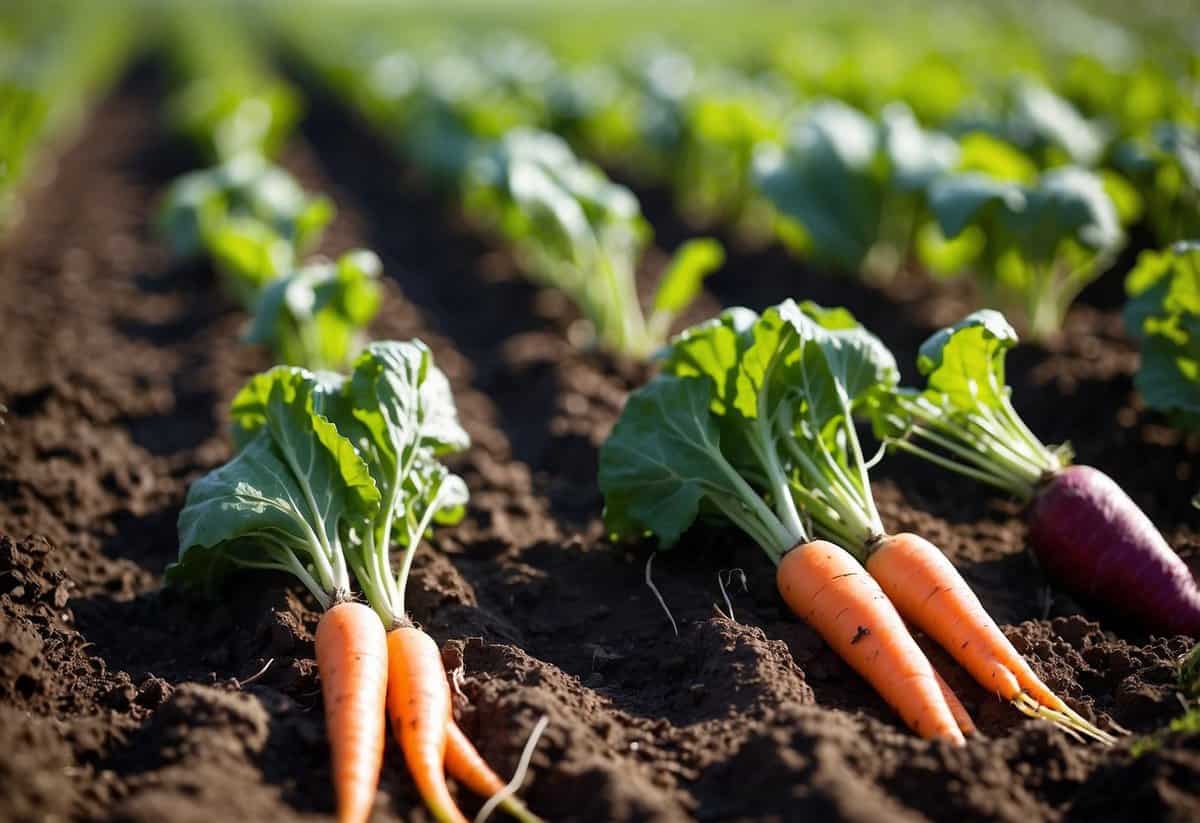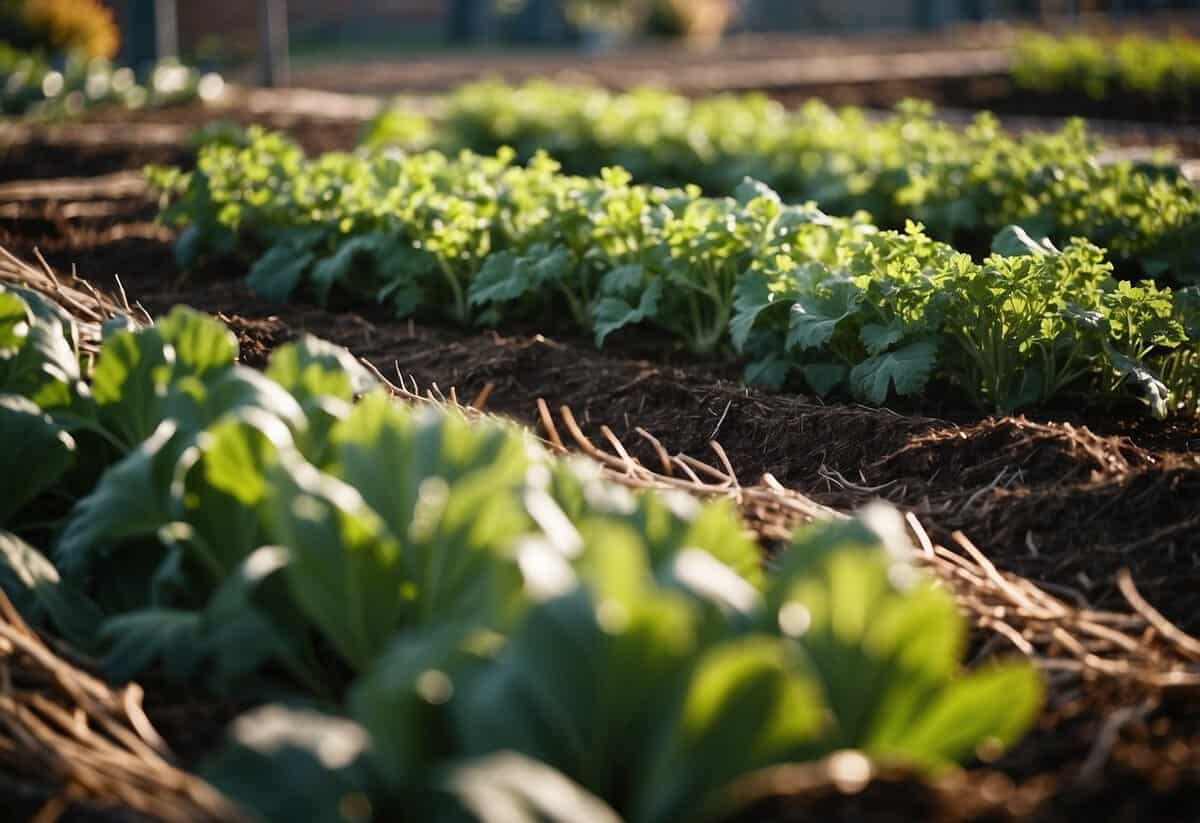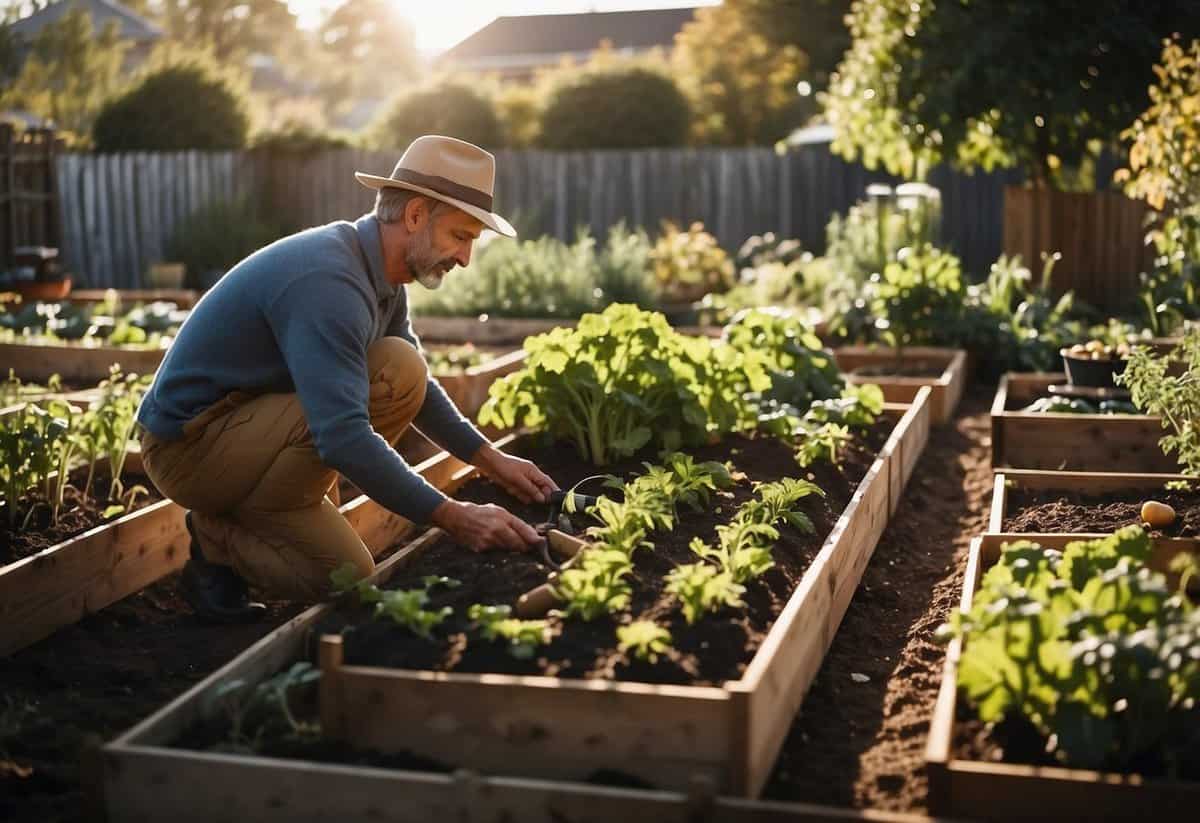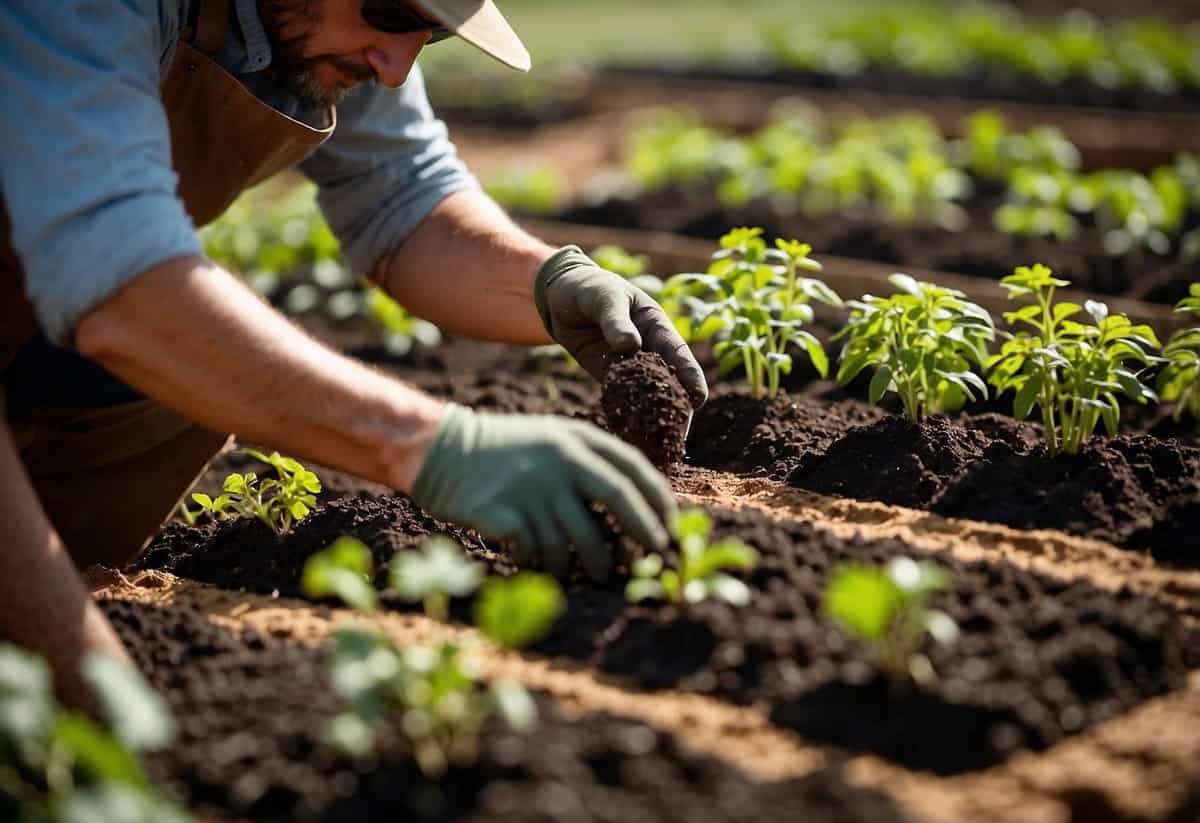February Vegetable Garden Tips: Easy Steps for a Lush Harvest
Starting your vegetable garden in February can set you up for a successful growing season. This is a crucial time to prepare your garden beds, plan your crops, and even start some plants indoors. What should you be doing in your garden this February to ensure a bountiful harvest?

During this transitional period between winter and spring, there are specific tasks you can do to maximize your garden’s productivity. Being proactive now can make your garden thrive and flourish as the weather warms up.
1) Plant Cold-Hardy Greens

In February, you can plant many cold-hardy greens in your garden. These include kale, spinach, and collards. They thrive in cooler temperatures and can even survive a light frost.
You can direct sow these seeds outdoors or start them indoors if it’s still very chilly. Once they sprout, you’ll have fresh greens in no time!
For more options and detailed tips, check out vegetables to plant in February. Happy gardening!
2) Start Seeds Indoors

February is the perfect time to start seeds indoors. Many vegetables need a head start to grow well.
Focus on starting vegetables like leafy greens, broccoli, cauliflower, and tomatoes. Keep an eye on your last frost date to time it just right.
Use a seed tray and place it under grow lights. Raise the lights as the plants grow. This helps them get strong and ready for transplanting.
3) Use Row Covers

Row covers are a great way to protect your vegetable garden in February. These covers are lightweight, breathable fabrics that let sunlight and water in but keep bugs and harsh weather out.
You can use them to trap warmth, which helps seeds germinate faster. They also shield your plants from pests and light frosts.
They come in different weights. Lightweight row covers allow more light to pass through, while heavier ones are better for extreme weather protection. Choose the right one based on your garden needs. For more details, visit Epic Gardening.
4) Mulch Your Beds

Applying mulch is a great way to keep your vegetable garden healthy. Mulch helps retain moisture, suppress weeds, and regulate soil temperature.
For best results, spread a 3-4 inch layer of organic mulch, like straw or wood chips. Avoid using rocks as mulch, as they can heat up and harm your plants. For more details, you can check out these mulching tips.
5) Build Raised Garden Beds

Building raised garden beds makes gardening easier and more efficient. Use untreated wood, like cedar or redwood, which doesn’t rot easily. Another option is using recycled plastic timbers that look like wood and last a long time.
Keep the width of your beds no more than 4 feet, so you can easily reach the middle. For beginner gardeners, a 4’x4′ size is recommended. Ensure your beds get at least six to eight hours of sunlight daily.
Consider creating taller beds and lining the bottom with cardboard to prevent weeds. This approach helps your garden thrive.
6) Check Soil pH Levels

Before planting, it’s important to check your soil’s pH levels. This helps ensure your vegetables grow strong and healthy.
You can use simple kitchen ingredients to do a quick test. Mix soil and water in a glass bowl, then add vinegar. If it fizzes, your soil is alkaline.
For more accurate results, consider sending a sample to a lab. University labs are affordable and provide precise readings.
7) Water Sparingly

Water your vegetable garden sparingly to ensure healthy growth. Over-watering can harm your plants, especially in the early stages when they don’t need much water.
During this period, it’s crucial not to let the foliage become too lush at the expense of root development. Gradually increase water as your plants begin to grow round roots. This will help them thrive without causing unnecessary stress.
8) Prune Dead Foliage

February is a great time to prune dead foliage from your garden.
Removing dead leaves and stems helps prevent diseases and pests.
Focus on perennials and shrubs.
Pruning also encourages healthy new growth.
Use clean, sharp tools to make precise cuts.
Dispose of the pruned material to keep your garden neat.
9) Plant Onion Sets

Planting onion sets in February can give you a head start on your garden. Start by preparing the soil with a good amount of compost to give the sets a nutrient-rich base.
Create a small trench, about a few inches deep, and place the onion sets about 1.5 inches below the surface. Make sure to space them 4 to 6 inches apart so they have room to grow.
Water the sets carefully after planting to help settle the soil around them. This will encourage strong root development and healthier onions. Keep the area weed-free and watch your onions thrive.
10) Rotate Crops

Rotating crops means changing where you plant your vegetables each year. This helps to prevent pests and diseases from building up in the soil.
Different plants take and add various nutrients, so rotating them keeps your soil healthy. For example, planting beans where you had tomatoes last year can refresh the soil.
Rotating crops in raised beds is also important. This practice ensures that your garden remains productive and reduces the risk of problems. To learn more, check out these crop rotation tips.
Preparing the Soil

Getting your garden’s soil ready is essential for growing healthy vegetables. Two key tasks are testing soil pH and adding organic matter to improve soil health.
Testing Soil pH
Testing the pH level of your soil helps you understand its acidity or alkalinity. Most vegetables grow best in soil with a pH between 6.0 and 7.0. You can buy a soil test kit from a garden center or send a sample to a local cooperative extension service.
To test, follow the kit instructions carefully. Usually, you’ll mix soil with water and a testing solution, then compare the color result to a chart. Adjusting pH is sometimes necessary. If your soil is too acidic, adding lime can help. For soil that is too alkaline, adding sulfur or composted pine needles may lower the pH.
Adding Organic Matter
Adding organic matter to your soil improves its structure, enhances nutrient content, and increases water retention. Compost, aged manure, and leaf mold are excellent choices.
First, spread a 2-3 inch layer of organic matter over your garden bed. Use a shovel or spade to mix it into the top 6 inches of soil. This practice not only enriches your soil but also promotes healthy root growth and improves drainage. Incorporating organic matter regularly will help maintain a fertile and productive garden.
Choosing the Right Vegetables for February

February is a great time to start preparing your garden for the year. You can focus on planting cool-season crops and frost-resistant varieties, each offering its own benefits.
Cool-Season Crops
Cool-season crops thrive in cooler temperatures and can withstand light frosts. These are perfect for planting in February. Some of the best options include lettuce, kale, and spinach. These leafy greens grow well in chilly weather and can be harvested earlier in the season.
Peas and carrots are also excellent choices. Peas, especially snap peas, can be direct sown and are ready to pick in about two months. Carrots, when planted early, have time to mature before the summer heat arrives.
In regions with milder winters, you can also plant onions, parsley, and beets. Start these seeds indoors if you’re in a colder zone, and transplant them outdoors when the soil warms up a bit.
Remember, consistent watering and well-drained soil are key to helping these cool-season crops thrive during their early growth stages.
Frost-Resistant Varieties
Certain vegetables can handle frost, making them ideal for February planting. Broccoli and cabbage are classic examples. These hardy vegetables can survive unexpected cold snaps and still produce a healthy yield.
Brussels sprouts and collard greens are also good options. Both are known for their resilience in cold weather and can be planted directly in the garden. Use mulch to protect the young plants from any sudden temperature drops.
Turnips and radishes grow well in cooler weather and can sprout quickly. If you’re in a warmer zone, you can even consider starting potatoes during this time. These tubers need cooler temperatures to get started, making February an ideal month.
By choosing frost-resistant varieties, you ensure that your garden can handle late winter chills without losing your plants.
For more detailed planting guides, you can visit resources like Epic Gardening or The Tiny Life.
Planting Techniques and Tips

In February, you can use specific techniques to protect your garden from the cold and give your plants the best start. Here’s how you can use cold frames and mulching to your advantage.
Using Cold Frames
Cold frames are an excellent way to extend your growing season. They are simple structures, like mini-greenhouses, that protect plants from cold weather.
You can make a cold frame using old windows and wooden frames. Place it over your garden beds to create a warmer environment for seedlings. This helps early crops like lettuce and spinach thrive.
Make sure to ventilate the cold frame on sunny days to prevent overheating. Lift the lid slightly to allow air circulation. At night, close it to trap the heat. This simple technique is key for starting seeds early and protecting tender plants.
Mulching for Protection
Mulching is another crucial technique for your February garden. Mulch acts like a blanket, covering the soil and protecting plant roots from freezing.
Use organic materials like straw, leaves, or compost. Spread a thick layer around your plants. This helps retain soil moisture and regulates temperature.
Mulching also suppresses weed growth. When weeds don’t compete for resources, your vegetables can grow healthier. Be careful not to pile mulch too close to stems to prevent rot.
This practice is especially useful for root vegetables like carrots and onions. By keeping the soil conditions stable, you help your plants survive and thrive during the colder months.
By including cold frames and mulching in your gardening routine, you give your February garden a strong start.







